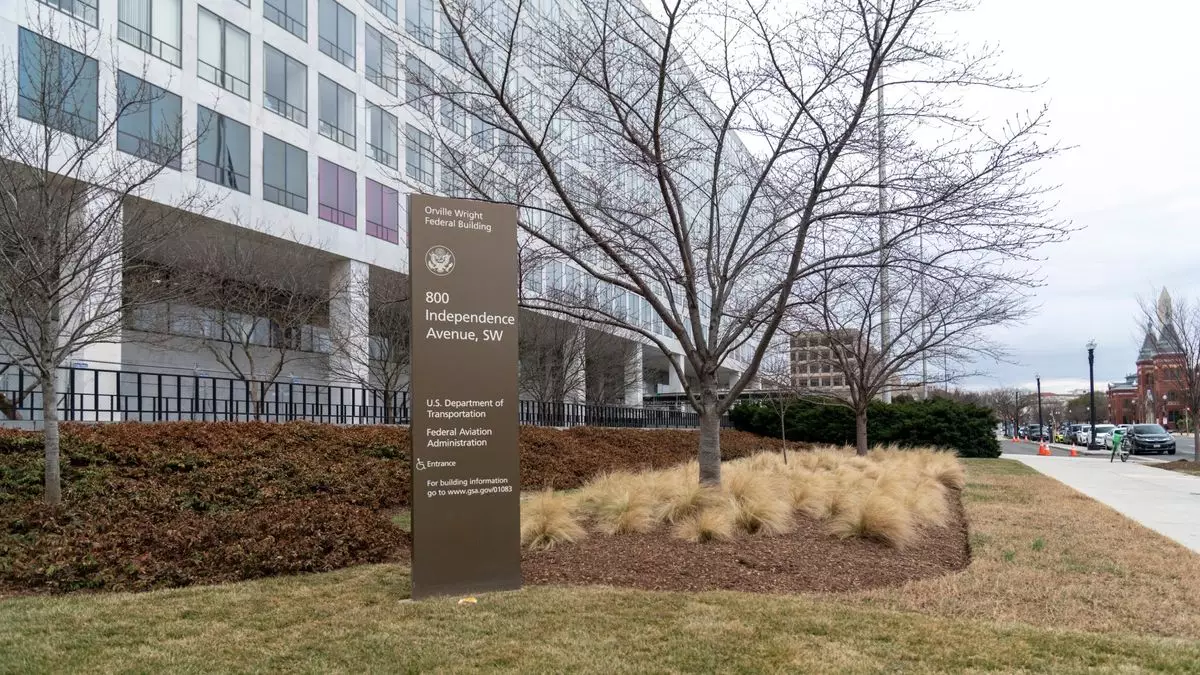The recent wave of employee terminations at the Federal Aviation Administration (FAA) has raised significant concerns not only within the realm of aviation safety but also regarding national security. The decision to let go of several hundred personnel, primarily probationary employees, has sparked debates and fears among those in the aviation sector about the future safety of the national airspace.
On the evening of February 14, a troubling email notification was dispatched to dozens of FAA employees, indicating their termination without prior warning or justification. The impacted workforce largely consisted of individuals involved in critical operations such as radar maintenance and navigational aids. David Spero, president of the Professional Aviation Safety Specialists union, voiced strong opposition to the manner in which these dismissals were carried out, questioning the rationale behind targeting employees responsible for maintaining the essential tools of air navigation and safety.
Despite promises from Transportation Secretary Sean Duffy that “zero air traffic controllers and critical safety personnel were let go,” skepticism remains among aviation stakeholders regarding the retention of employees responsible for crucial safety functions. The ambiguity surrounding who qualifies as “critical safety personnel” has prompted backlash, with those affected left in a state of disarray about their roles in ensuring secure airspace.
The National Air Traffic Controllers Association, representing the nation’s air traffic controllers, emphasized that it is currently evaluating how these sudden firings could compromise aviation safety and, by extension, impact their membership. The association’s statement reflects a growing unease about the potential ramifications of losing key personnel within an industry where the stakes are inherently high.
The announcement of layoffs poses difficult questions: how many critical functions could have been inadvertently jeopardized by these terminations? The reputation of the FAA as an agency prioritizing safety might come under scrutiny if these job cuts create gaps in essential services critical for maintaining flight operations.
Beyond the clear implications for aviation safety, the firings also touch on national defense issues. Some of the axed employees were reportedly working on a classified radar system aimed at bolstering early-warning capabilities for incoming missile threats to Hawaii. This project, which involves collaboration with the Department of Defense, highlights the interplay between domestic aviation regulation, national security, and the critical work needed to protect the United States against potential threats.
Charles Spitzer-Stadtlander, one of the employees removed from the FAA, lamented the idea that vital expertise and institutional knowledge could be lost as a result of these dismissals. For an agency that plays a direct role in national security and ensures the safety of flight operations, such layoffs cast doubt on its efficacy and vigilance in safeguarding the nation’s airspace.
As the campaign to reduce federal bureaucracy gains momentum, the political dimensions underlying these terminations cannot be overlooked. Speculations have arisen that some employees, including Spitzer-Stadtlander, were targeted due to their personal sentiments against the political figures steering the policies. His expressions of dissatisfaction with prominent figures in leadership roles may have garnered unwarranted attention amid broader socio-political tensions.
Intriguingly, the nebulous ‘Department of Government Efficiency’ has figured into these allegations, purportedly monitoring social media for dissent. This has amplified fears that what may ostensibly be a matter of efficiency has deeper implications for employee privacy and political pressure within the government.
The abrupt layoffs at the FAA call for greater transparency from government agencies about employment practices and the criteria for making such consequential decisions. As issues of aviation safety and national security become more intertwined, it is imperative for the public and professionals alike to demand accountability from a regulatory body pivotal to maintaining secure flight operations.
The chilling effect of these firings could potentially harm not just the individuals affected but also raise concerns about the reliability of the FAA’s workforce. A detailed assessment of the ramifications should prompt discussions about restoring trust with aviation professionals and ensuring that national security remains uncompromised in the pursuit of bureaucratic efficiency. In an era where the implications of each decision can resonate beyond the immediate consequences, a cautious, judicious approach is necessary to safeguard lives and maintain confidence in the nation’s aviation system.

